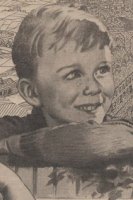 These learning resources are designed to make the work of the Children on the Move project more accessible for primary school children.
These learning resources are designed to make the work of the Children on the Move project more accessible for primary school children.
It gives pupils the opportunity to learn about World War II evacuation from the first-hand accounts of the people who actually experienced it.
They are aimed at Key Stage 2 and can be used to support the teaching of History and Citizenship at this level. Whilst specifically aimed at Key Stage 2, these resources could also be adapted for other Key Stages studying Second World War evacuation, the effects of the Second World War on Staffordshire and the assessment of oral history as historical evidence.
The resources focus on the first-hand oral history accounts of World War II evacuees and those touched by evacuation in Staffordshire. This oral history archive was collected by Staffordshire Record Office and Staffordshire Museums Service for the HLF-funded Children on the Move project.
There are seven components to these learning resource – a series of PowerPoint-based lessons, two activities and two web-based case studies for further exploration. These lessons and activities address questions such as:
- What was it like for children to be evacuated during the Second World War?
- What was it like for the families of children that were evacuated?
- How was evacuation organised?
- How did the billeting process affect evacuees?
- Where did evacuees come from and where were they sent to live?
- What was it like to live in another family’s house as an evacuee?
- How did life in Staffordshire differ from life at home?
- What was it like to be a child whose family took in evacuees? How did it feel to share your home and your family with evacuees?
- What contribution did Staffordshire billet families make through evacuation?
- What was the long-term impact of evacuation on the lives of those children evacuated?
Through first-hand accounts from people evacuated to Staffordshire and those who were part of billet families in the county, children can explore these questions, become aware of different experiences and perspectives and also learn to evaluate a range of primary sources, from oral history through to newspaper reports and school log books.
 All lessons and activities have cross-curricular links as detailed in the lesson plans. The lessons, activities and lesson plans can be downloaded from the lessons and activities page of this website. The historical sources to accompany the lessons and the transcripts of all audio-clips are also available to download from here.
All lessons and activities have cross-curricular links as detailed in the lesson plans. The lessons, activities and lesson plans can be downloaded from the lessons and activities page of this website. The historical sources to accompany the lessons and the transcripts of all audio-clips are also available to download from here.